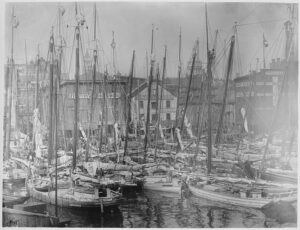After Senator Paul Sarbanes proposes an amendment, the U.S. Senate passes legislation that allows Turkey Tayac (Phiip Proctor, 1895-1978) to be buried in the Piscataway ancestral home Moyaone which is now Piscataway National Park.
Philip Proctor is born to a family in Southern Maryland that is branded “negro” or worse “mongrel.”
There is no state recognition of Native Americans in the 19th and early 20th centuries. Proctor’s ancestry goes back to the Piscataway Nation which is decimated by disease and stripped of its land by colonial encroachment well before 1800.
After fighting in World War I, Proctor takes the name Turkey Tayac and for decades pursues the cultural revitalization of his Native American heritage. In the 1960s, he joins the American Indian Movement and creates the non-profit “Piscataway-Conoy Indians” with his son. The organization’s mission is to revive the recognition of the Piscataways as a Native American nation.
Tayac supports the creation of Piscataway National Park because of his interest in Moyaone, the historic home of the Piscataways along the Potomac River.






